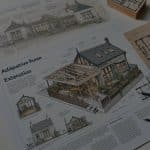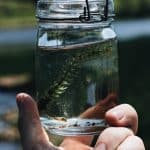As a homeowner or a land developer, you may have wondered how to manage water resources effectively and responsibly. In order to reduce water usage, you must consider employing water-efficient landscaping in your homes or future real estate developments. Not only does this practice conserve water, it also supports the sustainable management of limited resources.
The following sections will delve into the best practices for water-efficient landscaping, focusing on suburban real estate developments. Drawing from various studies and surveys conducted over the past years, this article aims to provide you with a comprehensive guide to responsible water use in the landscape. Let’s dive in.
This might interest you : How can mixed-use real estate developments promote sustainable urban living and reduce car dependency?
Understanding the Key Role of Water Conservation
Before we delve into the specifics, it’s crucial to understand why water conservation is vital. Numerous scholars have noted that the world’s water resources are under increasing strain, with management becoming a critical issue. As a result, there is an increasing push towards more sustainable practices in various areas, including landscaping.
In a study published in the Journal of Environmental Management, it was highlighted that urban development, including suburban real estate, significantly contributes to excessive water use. The research pointed out that irrigation systems often account for a large proportion of water consumption, especially in dry areas.
Additional reading : What innovative methods can enhance natural ventilation in high-rise real estate buildings?
According to a survey conducted by Google Scholars, the general behavior towards water use has changed over the years. More homeowners are aware of the need for conservation and are willing to adapt their irrigation practices to reduce usage. However, there is still much to be done in terms of adapting landscaping practices to become more water-efficient.
Identifying Water-Efficient Plants
Not all plants are created equal when it comes to water needs. Some require more than others, and choosing the right ones could be the key to reducing your water consumption. A study of plant water usage revealed that indigenous plants, those native to your area, often require less water than exotic species.
Adopting a plant palette that includes native species will not only reduce your water usage but also support local biodiversity. It’s worth noting that a little research can go a long way in this regard. Google Scholar can be an invaluable tool, providing access to numerous studies that list water-efficient plants suitable for your specific area.
Optimizing Irrigation Systems
Irrigation systems are a common feature in suburban landscapes. However, not all systems are designed with water conservation in mind. A recent study showed that by optimizing your irrigation systems, you could substantially decrease your water usage.
The first step is to ensure that your systems aren’t overwatering your landscape. This can be achieved by setting them to run off at specific times, usually at night or early in the morning when evaporation rates are the lowest.
In addition, newer ‘smart’ irrigation systems have been developed, which use sensors to detect the moisture levels in the soil and adjust the watering schedule accordingly. Implementing such a system could be a highly effective way to reduce water use.
Implementing Runoff Management
When it comes to water-efficient landscaping, managing runoff should also be a priority. This practice involves designing your landscape in such a way that water runoff is minimized. You can achieve this by incorporating features like rain gardens, permeable pavements, and rain barrels.
A case study conducted in a suburban development showed that incorporating these practices resulted in a significant reduction in runoff. Notably, these practices also reduced the risk of flooding and contributed to the overall aesthetic of the landscape.
Harnessing the Power of Technology
Finally, technology plays a vital role in water-efficient landscaping. In addition to ‘smart’ irrigation systems mentioned earlier, there are many other technological solutions available. For instance, some apps can help you monitor your water use in real time, giving you the ability to adjust your usage as needed.
Moreover, there are also online platforms that provide detailed information about water-efficient landscaping practices. Using these tools, you can plan and implement a landscape that not only looks beautiful but is also sustainable and responsible.
To sum up, it’s clear that water-efficient landscaping is an essential practice in suburban real estate developments. By understanding the importance of water conservation, identifying water-efficient plants, optimizing irrigation systems, implementing runoff management, and harnessing the power of technology, you can contribute to a more sustainable future.
Evaluating the Impact of Landscape Ordinances
Landscape ordinances play a vital role in water conservation and resource management in suburban real estate developments. According to a study published in the Journal of Natural Resources, landscape ordinances, or the laws that regulate land use and development, have the potential to significantly reduce water consumption in residential areas.
These regulations often include provisions on the types of plants that can be used, the design of the irrigation system, and the management of stormwater runoff. For instance, in some parts of the United States, ordinances require the use of native, water-efficient plants and restrict the use of high water-demand exotic species.
Furthermore, landscape ordinances can also demand the use of efficient irrigation systems. As noted earlier, these systems can significantly reduce water consumption by optimizing watering schedules and detecting soil moisture levels.
A search on Google Scholar reveals several papers highlighting the effectiveness of such regulations. For example, one study showed that areas with strict landscape ordinances experienced a substantial reduction in residential water use.
Importantly, while enforcing landscape ordinances may initially appear restrictive, they can lead to innovative and aesthetically pleasing landscape designs. Moreover, they contribute to the preservation of natural resources and foster a culture of responsible water use.
Promoting Water Quality and Saving through Education
Education is a powerful tool for promoting water conservation and improving water quality. A recent survey conducted by Google Scholar indicates that homeowners who understand the importance of water conservation are more likely to implement water-saving strategies in their landscaping.
By educating homeowners and developers about the potential of water-efficient plants, smart irrigation systems, and effective runoff management strategies, a substantial decrease in water demand can be achieved. Moreover, understanding the impact of these practices on water quality can motivate individuals to adopt more sustainable landscaping practices.
Various resources are available to assist in this endeavor. For instance, online platforms offer comprehensive information on water-efficient landscaping practices. Educational apps can also help monitor water usage and offer suggestions for improvements.
In addition, workshops and seminars can be organized to educate community members about the importance and benefits of water-efficient landscaping. Site visits to successful suburban developments that have implemented these practices can provide practical examples and inspiration.
In conclusion, while the challenge of sustainable water management in suburban real estate developments is significant, it is not insurmountable. By understanding the importance of water conservation, identifying water-efficient plants, optimizing irrigation systems, implementing effective runoff management, harnessing the power of technology, complying with landscape ordinances, and investing in education, we can substantially reduce water consumption and contribute to a more sustainable future. The resources are at our disposal; it’s up to us to make the change. As research on Google Scholar and numerous case studies have shown, every step toward water-efficient landscaping is a step toward a more sustainable world.











